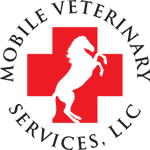The internet is a phenomenal resource readily available at our fingertips. There is a wealth of published information for horse owners to access, but how can one tell if the data they’re reading about is legitimate? How do you know if that source can be trusted and what key words should cause red flags to fly? Below are some helpful tips to help decipher the plethora of equine related articles available to you on the world wide web.
AUTHOR: Who is the article written by? If you’re looking for information on vesicular stomatitis in the Colorado equine population, be sure your data is provided by veterinarians at the forefront of the outbreak or governing bodies like the State Veterinary Board or the Department of Agriculture. If there is no direct reference to the credentials of the author at the beginning of the article, there should be references listed at the end of it. Feel free to refer to these references to assess their origin as well!

PUBLISHER: Has this data been published in association with a research institute like a university or college of veterinary medicine? Often such establishments are at the forefront of medical research and product development. If you’re reading an article about the protein content of alfalfa hay published by the agricultural or livestock nutrition department of your local vet school, I’d say that data is worth utilizing. If you’re reading about the magnesium content of crimped corn from your local neighbor’s horse blog, I’d dig a little deeper into the cited references of that information prior to quoting from such a source. Or, better, yet, confirm those claims utilizing an advanced search engine!
ADVANCED SEARCH ENGINE: As a veterinarian, some of my favorite search engines include Google Scholar and PubMed. Use of these search engines results in peer-reviewed literature, usually containing legitimate data. Most of the search results will link directly to an abstract of the article where you can read the purpose of the study and the key findings. Further perusal of the content usually requires purchase of the article for an exorbitant amount of money or requires you to access it through the online library of an educational establishment. Now is the time to capitalize on the perks of your children in college! By signing into the online library of an educational institution, there is a wide array of resources available to those who know how to find it.

QUANTITATIVE ASSESSMENT: So, you’ve found several articles that are pertinent to your quest for knowledge. First, look at the date the article was published. Anything older than five years of age warrants an additional search for newer material. If you come up dry, that’s okay, at least you tried. Generally speaking, the fresher the data, the better the outcome, kinda like milk. Next, how large is the study group? If a study conducted to determine the negative side effects of a prescription medication was only performed on 15 patients, I’d look for a larger study group upon which conclusions can be drawn. Conclusions drawn from larger study groups are more statistically sound.
QUALATATIVE ASSESSMENT: So, you’ve found a recent article, published in association with a research institute with a large test population. Well done! Next let’s assess the study design. When reading through the materials and methods portion of the article, does it sound like only one variable was tested, or were multiple variables in play? Anything more than one variable confounds the conclusions of the study. And how about the conclusions? Could any conclusions be discerned from the study and if so, with how much certainty? The higher the statistical support of the conclusions, the sounder the data originating from that particular study.
RED FLAGS: When perusing articles for information, stay away from absolute verbiage like “Horses with Cushing’s Disease always have long, shaggy coats” or “Laminitic horses invariably stand with a camped-out stance”. Most educators try to give a wide array of possible options for a given situation because no two animals ever act exactly the same. (Now there’s an absolute you can count on!) Also, be wary of products touting “The Ultimate Supplement” guaranteed to address dull coats, shelly hooves, chronic gas colic, gastric ulcers and arthritis… all in one product! No such magic exists.
If you’re not interested in consulting research studies while pursuing equine related data, turn to trusted publications like The Horse, which often cites and digests scientific articles into reader friendly versions. Or, just ask your veterinarian! We’re always happy to help seek out and provide legitimate information for you and your horse.



